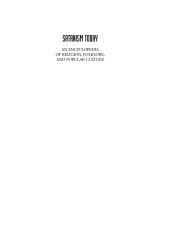I. VAMA MARGA Foundations Of The Left-Hand Path - staticfly.net
I. VAMA MARGA Foundations Of The Left-Hand Path - staticfly.net
I. VAMA MARGA Foundations Of The Left-Hand Path - staticfly.net
You also want an ePaper? Increase the reach of your titles
YUMPU automatically turns print PDFs into web optimized ePapers that Google loves.
depiction of sinister Tantra provided in the work of Sir John Woodroffe<br />
(1865—1936). Not an occultist or magician from the outer fringes of<br />
society, Woodroffe was a thoroughly respectable high-ranking Justice living<br />
210<br />
in Calcutta at the end of the ni<strong>net</strong>eenth century, who developed a personal<br />
fascination with Tantric thought and practice.<br />
With his lawyer's zeal for defense and meticulous explication,<br />
Woodroffe took pen to paper under the mystical Celtic pseudonym of Arthur<br />
Avalon, and produced a series of groundbreaking works that explained.<br />
Tantra as a legitimate spiritual discipline. <strong>The</strong> Avalon books not only served<br />
to remove some of Tantra's stigma in the minds of his European readers.<br />
Many English-speaking Indians also regarded the left-hand path as a<br />
shameful relic of a supposedly savage heritage they would just as soon have<br />
forgotten in their desire to become a modern Westernized nation. Avalon's<br />
work introduced a wide native Indian readership to the value of practices<br />
that had previously been clouded with secrecy. Earlier Indian works in<br />
English concerning Tantra had offered a heavily censored, whitewashed<br />
version of the Tantric teachings, usually from the derisive and biased<br />
perspective of the Brahmin caste authors who wrote them. Strangely, it took<br />
a European to make Tantra into at least a partially acceptable subject of<br />
study in India.<br />
For all of the great benefit of Avalon's books in keeping an<br />
imperiled tradition alive, and the pioneering scholarship with which they<br />
were written, he also succeeded in promulgating a long-lasting<br />
misinterpretation of the left-hand path. If Blavatsky painted the Vama<br />
Marga in the most fiendish black, Avalon just as zealously whitewashed the<br />
subject, ignoring and evading the more socially taboo aspects of the secret<br />
rites. Woodroffe went overboard in his eagerness to simultaneously justify<br />
and downplay the notorious erotic aspects of Tantricism's left-hand path.<br />
Avalon stresses the dangers and grave consequences incurred by an adept<br />
who undergoes sacred sex without totally extinguishing every last trace of<br />
carnal enjoyment and biological lust from the act. Sir John did his best to<br />
explain the spiritual philosophy underpinning Tantra's sexual form of<br />
illumination, but his arguments come across as defensive, reflecting his own<br />
rather prudish prejudices.<br />
Considering the hysterical Victorian attitudes prevailing at the time,<br />
and Woodroofe/Avalon's objective of preventing Tantra from being declared<br />
against the law, his reticence is perfectly understandable. Unfortunately,<br />
many other authors unexposed to more primary sources and teachers have<br />
unwittingly taken up this misleading and strait-laced approach directly from<br />
Avalon's writings. <strong>The</strong> result has been that it's now practically become an<br />
article of faith among Westerners that the serious Tantric initiate must strive<br />
manfully (or womanfully) to resist all sensations of carnal delight during the<br />
sexual rite. This priggish attitude can be illustrated in his remark that "Many<br />
years ago Edward Sellon, with the aid of a learned Orientalist of the Madras<br />
Civil Service, attempted to learn [the secret rite's] mysteries, but for reasons,<br />
which I need not here discuss, did not view them from the right standpoint."<br />
211<br />
<strong>The</strong> "right" standpoint, we must imagine, can only be the anti-hedonic<br />
interpretation of sexual illumination favored by Avalon, whose sensibilities<br />
were offended by Sellon's more lustful approach to the subject.<br />
Nevertheless, Avalon's books are essential reading due to their wealth of<br />
objectively conveyed knowledge concerning the principles and methods of<br />
Tantra.<br />
Avalon is also notable as the first author to consider the possibility<br />
of left-hand path methods of sexual taboo-breaking as being "Antinomian"<br />
in character. In light of the recent connection of some Western schools of<br />
the nominal left-hand path with the antinomian concept, Avalon's much
















